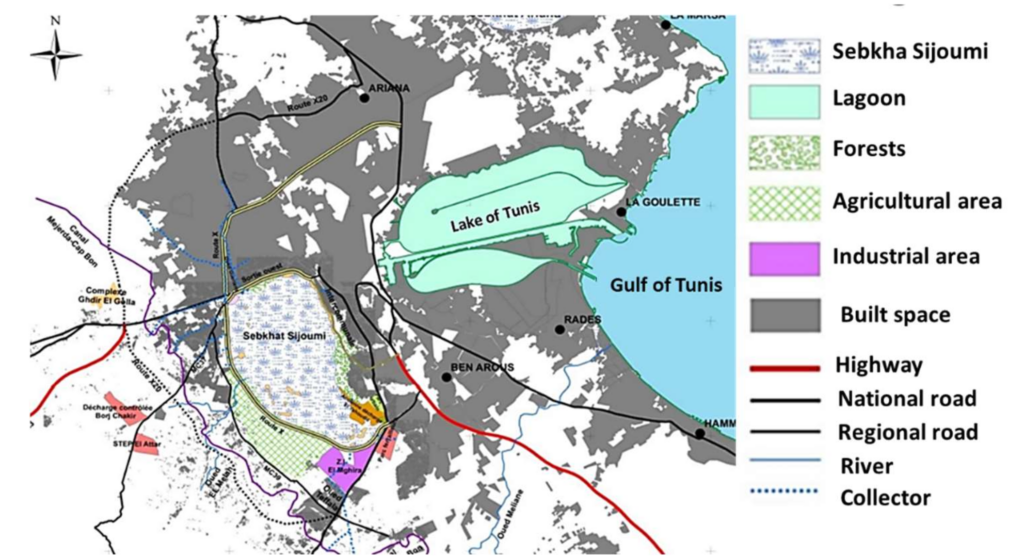CASE 6: Characterisation and treatment using improved constructed wetlands of stormwater runoff/sewage overflow in the Sebkha Sijoumi catchment
Partner in charge: ISSBAT (Institut Supérieur des Sciences Biologiques Appliquées ISSBAT de Tunis)
Location: Tunis, Tunisia
The Sebkha Sijoumi is an inland lagoon located in the west of Tunis lake and occupies a total area of 37 Km2. The Sebkha with its shallow depth water serves to collect the storm water from the Oued Gariana and the neigh- boring areas. It also receives raw sewage overflows from the surrounding pumping stations. The Tunisian case study includes the implementation and optimization of nature-based solutions focusing on hybrid constructed wetlands systems (CWs) for stormwater runoff/sewage treatment with the aim of achieving a TRL of 5. Low cost and locally available materials, that have capacity to removal of emerging contaminants, will be employed in CWs in order to reduce the costs and maximise removal efficiency.
Current Status Case Study + Needs for Improvement:
The Sebkha Sijoumi is a wetland of great ecological value in the middle of an urban area (the South-western suburb of Greater Tunis). It is Ramsar site (since 2007) and covers an area of 37 km2. In addition to urban runoff, Sebkha Sijoumi receives considerable quantities of sewage overflow increasingly marked by urbanization and the anarchic establishment of polluting industries. At Sebkha Sijoumi, the stormwater runoff come from the watersheds which are subject to recurrent floods. A nature-based filter system consisting on hybrid constructed wet- lands (CWs), sand-gravel filters cultivated with macrophyte plants, will be developed, installed and integrated with low cost materials for the treatment of the stormwater runoff/sewage overflow.
Activities - Technical configurations and envisaged improvements
Nature-based technologies, focusing on constructed wetlands, will be developed and installed for the treatment of stormwater runoff/sewage overflow. The system comprises a pre-treatment step (settling tanks) for the sedimentation of solid organic matter in order to reduce the load and avoid clogging of the filter bed. Hybrid CWs consisting on sand-gravel filters cultivated with macrophyte plants will be set-up and optimized. In addition to the traditional sewer parameters, the monitoring will be extended to emerging pollutants such as endocrine disrupting compounds (EDCs), pharmaceutical compounds, secondary microplastics and pathogens. In order to enhance the removal of pharmaceuticals, emerging pollutants and pathogens, selected low cost and locally available materials will be integrated within the CWs systems as alternatives to conventional. Pilot scale units will be used for the validation of CWs integrated to selected materials.
Ambition until the Project End and Beyond
Hybrid CWs will be developed with certain advancements, i.e., integration of a pre-treatment step, use of different low-cost and locally available materials, which will strongly concentrate on reaching high quality effluent. That quality includes emerging contaminants, secondary microplastics and pathogens. The research that will be done by StopUP project will offer a solid base for future application of improved CWs in stormwater runoff/sewage overflow treatment.

Scheme of Sebkha Sijoumi network.
